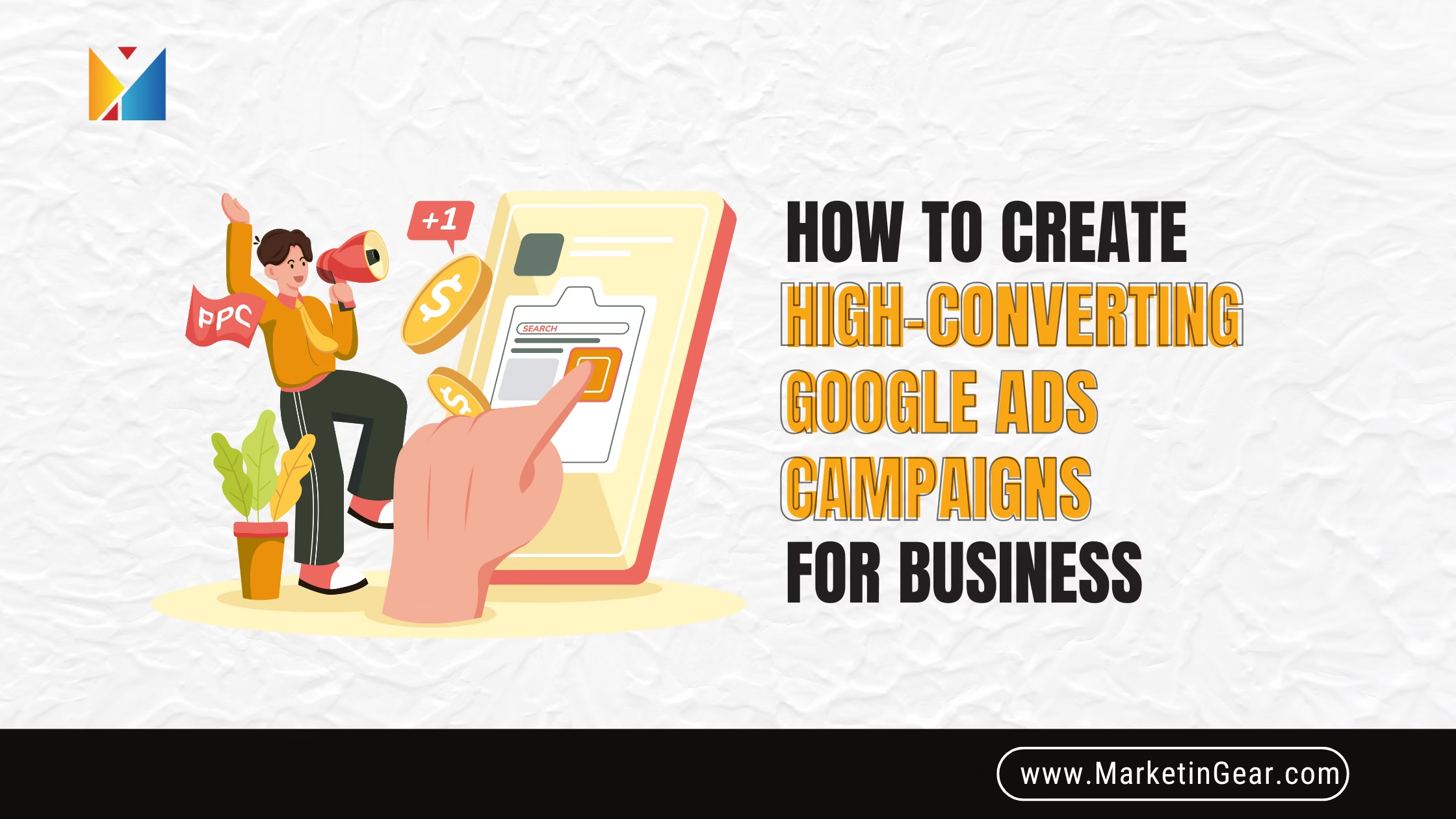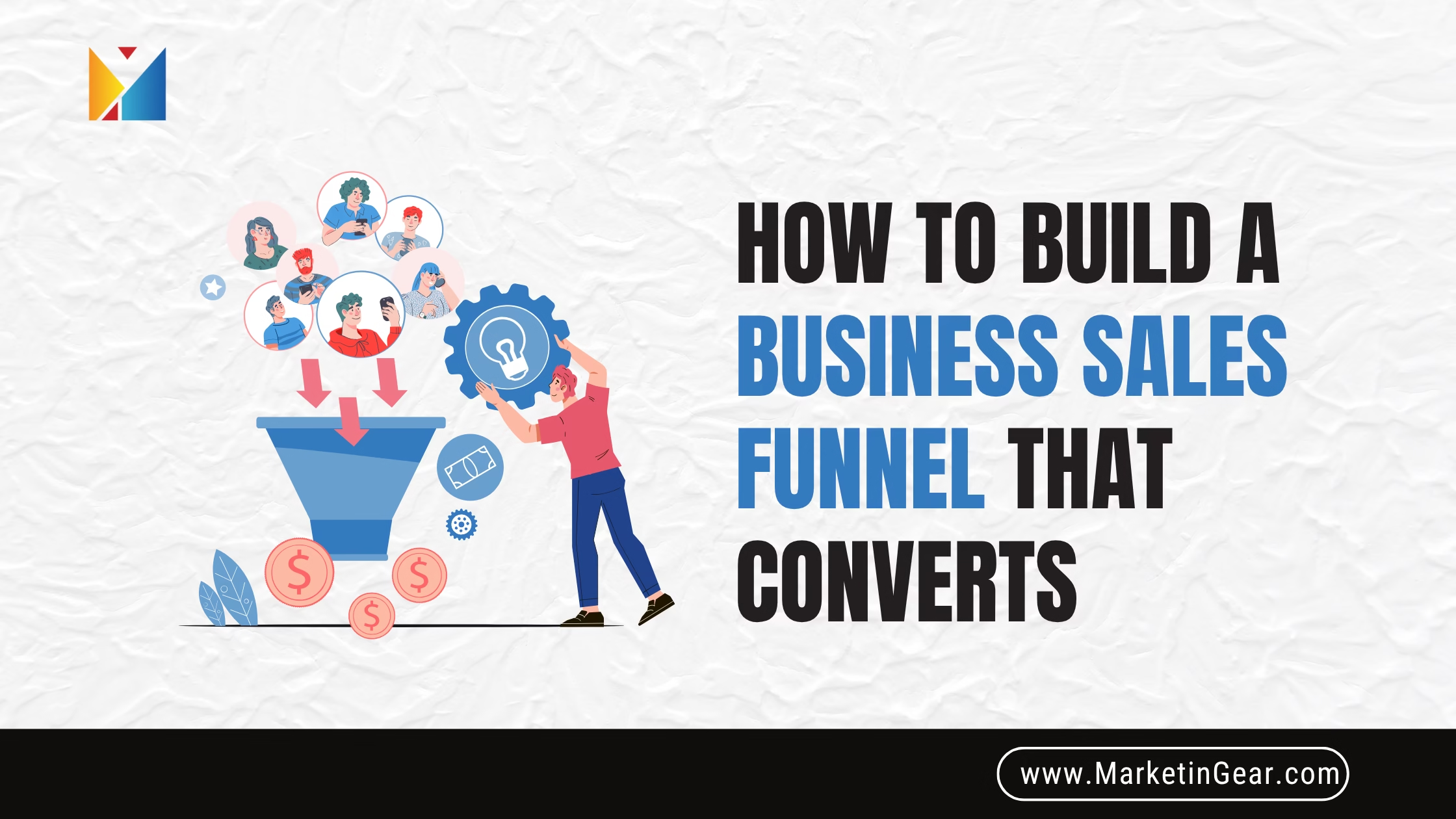Introduction
Running a business today isn’t just about selling a great product or service. It’s about making sure people find you—right when they need what you offer. But with so many competitors online, how do you make your business stand out? Enter Google Ads. When set up right, a Google Ads campaign doesn’t just bring clicks. It brings customers, sales, and real growth.
If you’ve ever felt lost or overwhelmed by Google Ads, you’re not alone. Many small business owners spend money on ads that don’t convert. But there’s a better way. Today, let’s walk through how you can build a high-converting Google Ads campaign—step by step.
1. Google Ads Campaign Planning: Start With Clear Goals
Every successful journey begins with a destination in mind. Before you ever write an ad, ask:
- What do you want people to do?
- Buy something?
- Call you?
- Fill out a form?
Set clear goals. This helps you measure success and tweak campaigns along the way. For example, a bakery might want more online orders, while a local gym may aim for new membership sign-ups. Write these goals down. They will guide every decision you make.
Budgeting for Google Ads
You don’t need to break the bank to get results. Start with what you can afford, even if it’s just a few dollars a day. Track results closely—Google Ads lets you scale up once you’re seeing success.
2. Campaign Structure: Build Strong Foundations
Just like a house needs solid walls and rooms, your Google Ads campaign needs the right structure.
Choose the Right Campaign Type
- Search Campaigns: Text ads show up when people search for your product/service.
- Display Campaigns: Visual ads appear on websites, apps, and YouTube.
- Shopping Campaigns: Perfect for e-commerce—showcase products right on Google.
- Video Campaigns: Great for building awareness or explaining complex offers.
- Local Campaigns: Drive in-store visits by showing your ads to people nearby.
Organize Your Ad Groups
Break your campaigns into smaller ad groups. Each ad group focuses on a specific product, service, or theme.
- Single Keyword Ad Groups: Focus on one main keyword per group for laser targeting.
- Thematic Ad Groups: Group related keywords together.
A shoe store, for instance, might have separate ad groups for “running shoes,” “kids’ sneakers,” and “formal shoes.” This lets you write ads that match exactly what customers are searching for.
3. Keyword Research: Find What Really Works
Choosing the right keywords is like finding the perfect fishing spot—it’s where your best customers hang out.
Finding High-Converting Keywords
Use Google’s Keyword Planner to spot words people actually use when they’re ready to buy. Long-tail keywords (like “best Italian restaurant near me” instead of just “restaurant”) often cost less and bring more serious customers.
Negative Keywords Strategy
Don’t waste money on the wrong clicks! Add negative keywords to block irrelevant searches. For example, a luxury watch store might add “cheap” as a negative keyword.
Competitor Keyword Analysis
See what’s working for your competitors using tools like SEMrush or SpyFu. You’ll spot gaps and new opportunities for your business.
4. Write Irresistible Ad Copy
Your ad copy is your first impression. Make it count!
Craft Compelling Headlines
Use headlines that answer the searcher’s question or pain point.
- Example: “Fresh Baked Bread Delivered to Your Door—Order Today!”
Write Effective Descriptions
Keep it clear and benefit-focused.
- Example: “Order before noon for same-day delivery. 100% organic, local ingredients.”
Use Strong Calls to Action
Tell people exactly what to do next:
- “Shop Now,” “Get a Free Quote,” “Book Your Session.”
Responsive Search Ads
Let Google mix and match your headlines and descriptions to see which combinations perform best.
5. Ad Extensions: Get More Real Estate (For Free)
Extensions give your ads extra info and make them stand out—at no extra cost.
- Sitelink Extensions: Add extra links to key pages (Contact, Menu, Specials).
- Callout Extensions: Highlight unique selling points (Free Shipping, 24/7 Support).
- Structured Snippet Extensions: Show product categories or services.
- Call Extensions: Add a click-to-call button for mobile users.
These help your ad grab attention and give users more ways to interact with your business.
6. Landing Page Optimization: Make the Click Count
Getting the click is just the first step. Now your landing page needs to seal the deal.
Designing Landing Pages for Conversion
- Make it super clear what you offer.
- Remove distractions (limit navigation).
- Use bold headlines, short paragraphs, and eye-catching visuals.
Relevance to Ads
Your landing page should match the ad’s promise. If your ad offers a free estimate, your landing page should feature that offer—front and center.
A/B Testing
Test different headlines, images, and forms. Sometimes, changing a single word or button color can make a huge difference!
7. Conversion Tracking & Analytics: Measure What Matters
“If you can’t measure it, you can’t improve it.”
Set up conversion tracking from day one.
- Google Ads Conversion Tracking: Tracks actions like form submissions or sales.
- Google Analytics Integration: See how users interact with your site after clicking your ad.
- Google Tag Manager: Makes it easier to manage all your tracking codes.
Check your data often. Where are people dropping off? What’s turning clicks into customers? This is where you’ll find the keys to long-term success.
8. Smart Bidding Strategies: Get the Most for Your Money
Not all bidding methods are created equal.
- Manual Bidding: You control how much you pay per click.
- Automated Bidding: Let Google adjust bids for more conversions.
- Target CPA: Optimize for a specific cost per acquisition.
- Maximize Conversions: Google finds the best opportunities for conversions.
- Enhanced CPC: Google raises or lowers your bid automatically to get more conversions.
- Target CPA: Optimize for a specific cost per acquisition.
Test and tweak until you find what works best for your business.
9. Audience Targeting: Reach the Right People
Your perfect customer isn’t just anyone with internet access. Use audience targeting for laser focus.
- Remarketing: Reconnect with people who visited your website.
- In-Market Audiences: Target those actively searching for your type of product or service.
- Custom Intent Audiences: Target people based on their recent online behavior.
- Customer Match: Upload your customer lists and reach them with tailored ads.
The more you understand your audience, the more relevant (and successful) your ads will be.
10. Continuous Optimization: Don’t Set It and Forget It
Digital marketing is like gardening—you have to tend to it.
Improve Quality Score
Google rewards ads that are highly relevant to users. Higher quality scores = lower costs and better ad placement.
Increase Click-Through Rate
Test new ad copy, try new extensions, and keep keywords tightly aligned with your offers.
Reduce Cost Per Click
Pause underperforming keywords, use negative keywords, and improve your quality score.
Regular Campaign Audits
Schedule weekly or monthly check-ins. Review results, adjust budgets, and update keywords.
11. Reporting and Performance Analysis: Make Smart Decisions
Keep your eye on the metrics that matter.
- Key Google Ads Metrics: Clicks, impressions, CTR, conversion rate, and cost per conversion.
- Custom Reports: Focus on what matters to you (e.g., phone calls, sales, bookings).
- Google Ads Performance Insights: Use these to guide future campaigns.
12. Google Ads Best Practices by Industry
- E-commerce: Use Shopping campaigns, highlight sales, and use dynamic retargeting.
- Local Business: Leverage Local campaigns and call extensions.
- B2B: Focus on lead generation forms and detailed, trust-building ad copy.
- Service-Based Businesses: Emphasize quick contact options and customer testimonials.
13. Common Google Ads Mistakes to Avoid
- Broad Match Keyword Waste: Don’t use too-broad keywords—costs go up, results go down.
- Neglecting Negative Keywords: You’ll waste budget on irrelevant clicks.
- Poor Landing Page Experience: If your landing page doesn’t match the ad, people bounce.
- Ignoring Conversion Data: Always monitor and learn from your results.
Conclusion
Google Ads can feel intimidating, but you don’t need a giant budget or a marketing degree to make it work for your business. Start with clear goals, build campaigns methodically, and always focus on your customers’ needs. Test, learn, and tweak—that’s the secret sauce.Need help making your Google Ads campaigns work harder for your small business? MarketinGear is here for you. Reach out today and let’s turn those clicks into loyal customers, together.




